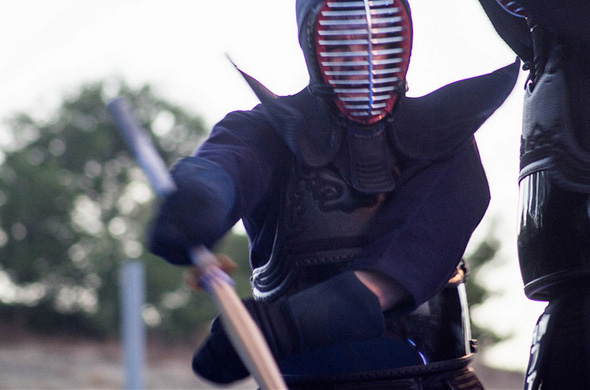Esta entrada también está disponible en: Spanish
This year, MIT offers free kendō lessons for the school community. These take place every Tuesday and Thursday from 20:30 to 22:00, and are also open to participants from outside the school. But what exactly is kendō, and what does its practice involve? Although to many of you it may ring a bell, as you have seen exhibitions of this art in the MIT School parties, here we present information for those interested in practicing it .
Kendō is a modern Japanese martial art in which it’s necessary to wear an armor (bōgu) and a bamboo sword (shinai) or a wooden sword (bokken) to combat. It is considered the direct heir of several schools of classical Japanese fencing, in which the legendary Japanese medieval warriors (samurai) were trained. It is the martial art that has influenced the most, along with judo, the methodological development and the terminology of the modern Japanese martial arts of the twentieth century.
The total weight of the equipment needed to fight is almost five kilos. As a result, during a training session, a person looses as much water as in a high-impact aerobic session. This means that kendō is an effective cardiovascular exercise, which focuses on the development of strength and agility. Furthermore, it is a sport that demands high discipline, because the main objective is to obtain complete control over the movements.
As usually happens with most of the martial arts, the practice is not limited to the mere sport, but also entails a certain philosophical values. For starters, one of the principles of Kendo is the KI-KEN-TAI no ichi, meaning that the spirit (Ki) sword (Ken) and body (Tai) must act at once, showing total physical and mental involvement in the attack. In addition, concepts such as Mushin or “empty mind” -an exponent of Zen-Buddhism- are the essence of achieving the highest standards in the art of kendō. This state is characterized by an absence of thoughts and emotions (especially fear, anger and ego), allowing the mind to remain open and adaptable to all circumstances. It is related to the flow experienced by artists in a creative process.
There are other concepts inherent in the practice, as Fudoshin or ‘impassive mind’ which, in Shingon Buddhism, implies that the barriers can’t be knocked down by the fury of disappointment, doubt, fear or surprise that the fighter feels as a consequence of opponent’s actions. Since these concepts can be applied to daily life, the kendoka (those who practice Kendo) like to define this martial art as a way of life. For all these, it has been chosen by MIT School to complement the practice of aikido, taught along with yoga in the school. If you need more information or want to participate in the classes, you can write an e-mail to Secretariat.

 English
English Español
Español 